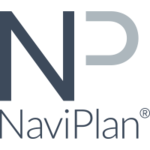Description

Ledgy

WealthArc
Comprehensive Overview: Ledgy vs WealthArc
Certainly! Below is a comprehensive overview of Ledgy and WealthArc, focusing on their primary functions, target markets, market share, user base, and key differentiating factors.
Ledgy
a) Primary Functions and Target Markets
Primary Functions:
- Equity Management: Ledgy provides tools for managing cap tables, employee stock options, and shareholder communication.
- Scenario Modeling: Offers capabilities for scenario modeling to help businesses plan for future fundraising rounds and exits.
- Stakeholder Engagement: Facilitates better stakeholder management with features that allow for easy sharing of reports and collaboration among teams.
- Compliance and Reporting: Ensures businesses comply with legal and financial regulations with automated compliance reports and audit trails.
Target Markets:
- Startups and SMEs: Primarily targets tech startups and small-to-medium enterprises looking to manage equity efficiently.
- Venture Capital Firms: Useful for VC firms needing transparency in the equity distribution of their portfolio companies.
- Scale-ups: Companies that have outgrown basic spreadsheet management for their equity could benefit from Ledgy’s more sophisticated solutions.
b) Market Share and User Base
- Market Share and User Base: As a specialized tool, Ledgy commands a niche within the equity management space. While exact market share can fluctuate, it’s popular among European startups and scale-ups. The user base is growing, with Ledgy increasingly recognized in tech and entrepreneurial communities.
c) Key Differentiating Factors
- User Experience: Known for an intuitive user interface that makes complex equity management accessible even to users without a financial background.
- Customization and Flexibility: Offers a high degree of customization to fit the unique needs of startups and their dynamic cap tables.
- Focus on European Regulations: Strong emphasis on compliance with European financial regulations, making it particularly attractive for companies based in Europe.
WealthArc
a) Primary Functions and Target Markets
Primary Functions:
- Wealth Management Platform: Provides a comprehensive platform for managing investment portfolios, performance analytics, and client relationship management.
- Data Aggregation: Allows financial advisors to aggregate data from multiple custodians and automatically generate reports and insights.
- Client Portal: Provides a client-facing portal where clients can access their portfolio information, reports, and performance metrics.
- Risk Management and Compliance: Tools for assessing risk and ensuring compliance with financial regulations.
Target Markets:
- Wealth Managers and Financial Advisors: Designed for professionals who manage high-net-worth and ultra-high-net-worth individuals.
- Family Offices: Useful for family offices looking to streamline their wealth management operations.
- Private Banks: Provides private banks with advanced analytics and comprehensive client management tools.
b) Market Share and User Base
- Market Share and User Base: WealthArc has carved out a solid presence in the wealth management tech industry, particularly in Europe. Its user base primarily consists of wealth managers and financial advisors; however, increasing recognition could suggest expanding influence.
c) Key Differentiating Factors
- Data Integration: Known for robust data integration capabilities, supporting seamless aggregation of financial data from numerous sources.
- Advanced Analytics: Offers sophisticated analytics tools that empower wealth managers with actionable insights.
- Focus on Automation: Automates many manual processes for wealth management, increasing efficiency and reducing human error.
- Client Experience: Emphasizes enhancements to the client-advisor relationship through an intuitive digital platform that allows clients greater visibility and control over their investments.
Comparison and Conclusion
While both Ledgy and WealthArc operate within the financial technology landscape, they serve different niches. Ledgy focuses on equity management for startups, offering tools tailored to cap table management and compliance. In contrast, WealthArc targets wealth managers and financial advisors, providing comprehensive tools for portfolio management and client interaction.
- Target Market Size and Dynamics: Ledgy's market is rapidly growing alongside the startup ecosystem, whereas WealthArc's market is more traditional but expanding with digital transformation efforts.
- Technological Focus: Ledgy emphasizes ease of equity management and regulatory compliance, whereas WealthArc provides advanced analytics and data integration for wealth management.
Choosing between these two solutions would depend largely on whether your primary need is equity management for an evolving company or sophisticated wealth management and relationship-building tools within financial services.
Contact Info

Year founded :
2017
+41 44 585 21 23
Not Available
United Kingdom
http://www.linkedin.com/company/ledgy

Year founded :
2015
+41 79 268 36 93
Not Available
Switzerland
http://www.linkedin.com/company/w3altharc
Feature Similarity Breakdown: Ledgy, WealthArc
Ledgy and WealthArc are distinct financial software platforms targeting different segments of the financial industry, yet they share some commonalities due to their focus on financial data management. Here's a breakdown of their features, user interfaces, and unique attributes:
a) Core Features in Common
-
Data Management: Both platforms offer solutions for managing financial data efficiently. They allow integration with various data sources to streamline information gathering.
-
Reporting and Analytics: They provide robust reporting tools to generate insights and analytics on financial data, helping users make informed decisions.
-
Security and Compliance: Each platform emphasizes data security and compliance with industry standards, ensuring that sensitive financial information is protected.
b) User Interface Comparison
-
Ledgy:
- Typically known for having a user-friendly and intuitive interface.
- Focuses on simplicity, making it accessible for users who may not have deep technical knowledge.
- Primarily used for equity management, which means the UI has equity charts, tables, and cap tables configurations that are easy to navigate.
-
WealthArc:
- Designed with wealth managers and financial advisors in mind, offering a more data-intensive interface.
- The UI is tailored for detailed financial analysis, incorporating advanced data visualization tools.
- It provides a dashboard-centric experience, enabling users to see an overview of their client portfolios quickly.
c) Unique Features
-
Ledgy:
- Equity Management: Specializes in cap table management for startups and growing companies. This includes functionality for managing employee stock options and investor relations.
- Scenario Modeling: Allows users to simulate different financial scenarios, which is particularly useful for planning funding rounds or exit strategies.
-
WealthArc:
- Portfolio Management: Offers a comprehensive suite for managing financial portfolios, ideal for investment advisors and wealth managers.
- Client Relationship Management (CRM): Includes features for managing client relationships directly within the platform.
- Integration with Financial Institutions: Provides connectivity with a broad range of financial institutions for seamless data transfer and management.
In conclusion, while Ledgy and WealthArc share some core features around data management and security, they cater to different markets with unique offerings tailored to their specific user bases. Ledgy focuses on equity management for startups, while WealthArc supports wealth management with a strong emphasis on portfolio management and client relationships.
Features

Not Available

Not Available
Best Fit Use Cases: Ledgy, WealthArc
Ledgy
a) Best Fit Use Cases for Ledgy
Ledgy is primarily designed for companies that need comprehensive cap table management and equity management solutions. The platform is particularly beneficial for:
-
Startups and Scale-ups: Ledgy is ideal for startups because it helps founders manage their equity structures from the ground up. As companies scale, Ledgy supports complex structures and multiple funding rounds.
-
VC-backed Companies: Companies that have multiple rounds of venture capital funding benefit from Ledgy's ability to manage convertible notes, SAFE notes, options, and other equity instruments.
-
Global Teams: Ledgy is suited for companies with employees and shareholders in multiple countries, thanks to its support for diverse legal and financial regulations.
-
Firms with Employee Stock Options: Companies offering employee equity plans can use Ledgy to manage and communicate stock options effectively with their team members.
WealthArc
b) Preferred Use Cases for WealthArc
WealthArc is more suited for wealth management firms and financial advisors who require an integrated solution for portfolio management. It’s typically used in the following scenarios:
-
Wealth Managers and Financial Advisors: Firms looking to automate and optimize their portfolio management processes, including performance analysis, client reporting, and compliance, can greatly benefit from WealthArc.
-
Multi-custodian Environment: WealthArc excels in environments where wealth managers need to consolidate data from multiple custodians, providing a unified view of client assets.
-
Focus on Client Experience: Financial advisors who prioritize client engagement through personalized reporting and interactive dashboards will find WealthArc beneficial.
Industry Verticals and Company Sizes
-
Ledgy: This product is tailored to startups and SMEs that deal with complex equity structures as they grow. It's suitable across various sectors as long as the business issues equity, particularly tech and innovative sectors where stock options are a key part of employee compensation.
-
WealthArc: WealthArc caters to the financial services industry, specifically wealth management firms, family offices, and banks that handle portfolio management. It typically supports medium to large firms that manage substantial assets and require sophisticated data analytics and reporting capabilities.
In summary, Ledgy is best for companies needing equity management solutions, primarily startups and scale-ups, while WealthArc is preferred by wealth management firms and advisors requiring advanced portfolio management features. Each caters to its respective industry's specific needs across different company sizes.
Pricing

Pricing Not Available

Pricing Not Available
Metrics History
Metrics History
Comparing teamSize across companies
Conclusion & Final Verdict: Ledgy vs WealthArc
To provide a conclusion and final verdict between Ledgy and WealthArc, it’s important to consider their unique features, target audiences, and overall value propositions.
a) Best Overall Value
Ledgy: Primarily focused on equity management for startups and corporations, Ledgy offers tools for cap table management, employee participation plans, and investor relations. It provides significant value for companies looking to manage their equity efficiently, facilitating transparency and communication with stakeholders.
WealthArc: Geared towards wealth managers and financial advisors, WealthArc offers a comprehensive portfolio management platform. Its value lies in streamlining operations for wealth management firms, improving data accuracy, regulatory compliance, and client communication.
Verdict: The best overall value depends on the specific needs of the user. For startups and companies seeking equity management solutions, Ledgy offers tremendous value. Conversely, WealthArc is more suitable for wealth management professionals looking to enhance their portfolio management capabilities.
b) Pros and Cons
Ledgy Pros:
- Excellent for managing equity and cap tables, especially in dynamic startup environments.
- Facilitates better communication and transparency with employees and investors.
- User-friendly and scalable for growing companies.
Ledgy Cons:
- Limited functionality outside of equity and cap table management.
- May not be suitable for large enterprises seeking broader financial management tools.
WealthArc Pros:
- Comprehensive suite for portfolio and wealth management.
- Improves efficiency and accuracy for financial advisors and wealth managers.
- Advanced features for data management and regulatory compliance.
WealthArc Cons:
- Primarily designed for financial advisors, which may limit its usability for other business types.
- Could be excessive for small-scale advisors due to its broad functionalities.
c) Specific Recommendations
For users deciding between Ledgy and WealthArc, consider the following factors:
-
Business Needs: Determine whether you need a tool for equity management or wealth/portfolio management. Ledgy is excellent for companies managing equity stakes, while WealthArc is designed for managing client portfolios and financial assets.
-
Scalability: Assess the growth and scalability needs of your business. Ledgy can be a good fit for rapidly growing startups, whereas WealthArc supports scale in managing a diverse client base for wealth management firms.
-
Use Case: Align the product features with your specific business processes. Software solutions are often best when they address specific, day-to-day operational challenges.
-
Budget and ROI: Consider the cost-benefit scenario. Both platforms offer different pricing structures, so evaluate them relative to potential returns on investment through operational efficiency or stakeholder satisfaction.
By carefully assessing these factors in light of your business goals and operational needs, you can choose the product that best aligns with your strategic objectives.




